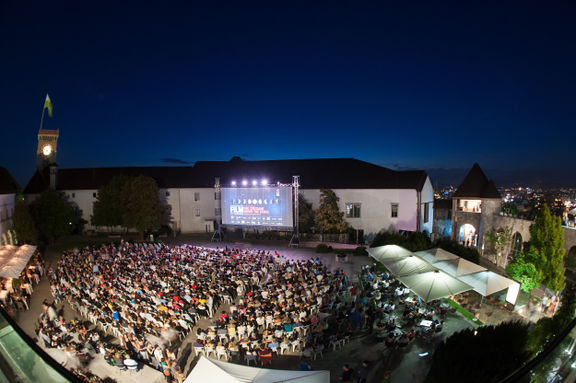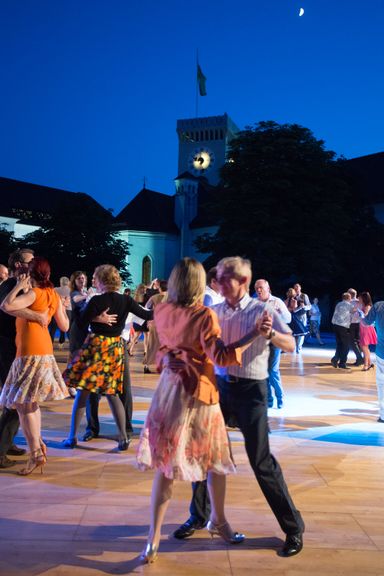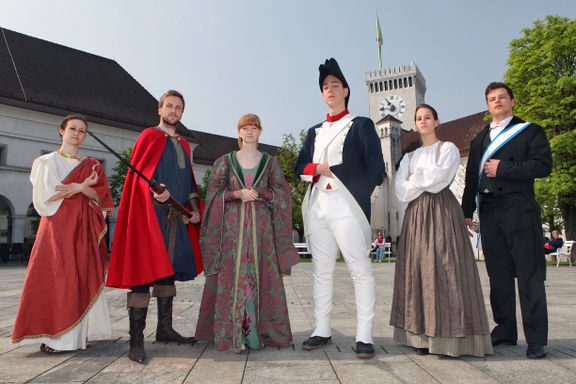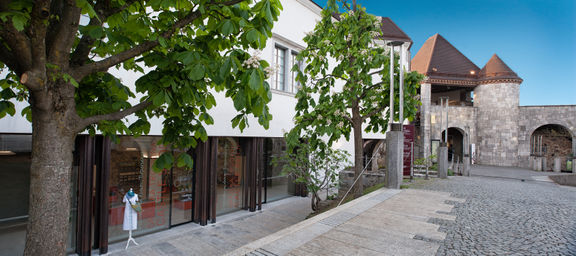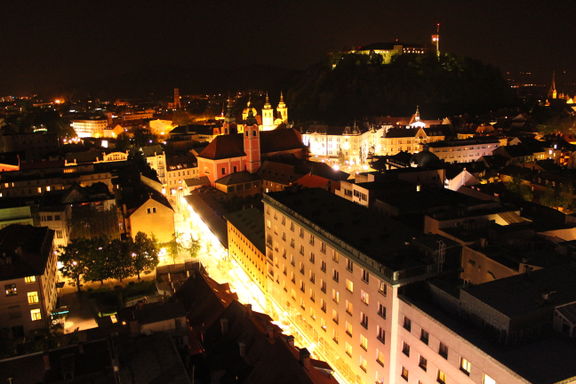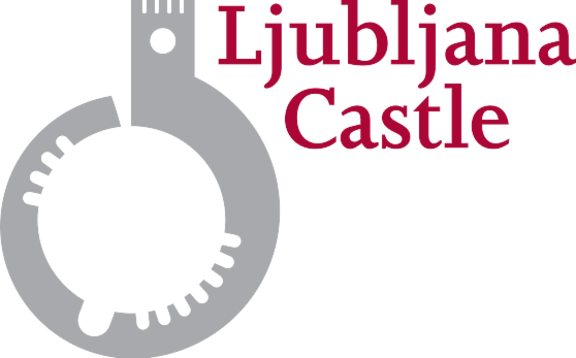Ljubljana Castle
History
The oldest castle on the hill probably dates back to the 11th century. Written sources mention it in 1144 as the seat of the feudal estate of the Carinthian Dukes of Spanheim. In the first half of the 13th century they conferred town privileges on the settlement on the Ljubljanica River. In approximately the same period a stone-built fortress was erected on the Castle Hill to better protect the town; together with the two extensions of the town walls, it closed the fortification ring of Mestni trg (Town Square). In 1335 the castle was transferred into the seat of Carniola to the Habsburgs, thereafter remaining their hereditary property for several centuries.
The present castle, historically the third one, was built by the Duke, later Emperor, Frederick III. It was erected in the 15th century after its predecessor had been completely destroyed. Except for the outer walls, the castle chapel, the corner towers and two entrance towers, the rest of the buildings originated in the 16th and 17th centuries.
As late as 1848 the appearance of the castle was enhanced by the dominant watchtower replacing the wooden one, which gave the present architectural ensemble its final form and the castle its characteristic silhouette, corrected in 1990s.
During its long and varied history the castle was mostly a military fortress, but also functioned as the seat of provincial rulers, with the city tower being used by pipers and fire guards. In spite of all this the role of the castle gradually dwindled, as did the strategic importance of the fortress and walls. It was rescued from total destruction by a governmental decree in 1814 to turn it into a penal institution. In 1905 the castle was bought by the City of Ljubljana and turned into multi-residential building for the citizens, but mainly for prisoners and the poor.
Renovation
Since 1988 the Municipality of Ljubljana has been carrying out continuous archaeological research at Ljubljana Castle, which confirmed the continuous settlement of the hilltop.
In the 1930s Jože Plečnik's idea was to build a new conical parliament to replace the castle, but he managed to realise only Šance (redesigned remains of the fortifications) and the avenue. The first renovation work was carried out in 1940s according to town planner Boris Kobe. The recent renovation work was carried out in 1964–2004 by architects Miha Kerin, Majda Kregar, and Edo Ravnikar, which gave the castle a new steeper roof, a higher watchtower, new access, and a regulated defensive corridor around the margin of the former fortified walls, linking the renovated castle structures together.
 The renovated premises at the Ljubljana castle, the Palatium hall, 2003
The renovated premises at the Ljubljana castle, the Palatium hall, 2003
At the end of 2006 the Municipality of Ljubljana connected the Ljubljana Castle with the historic city centre by an urban means of transport – a funicular railway. The ride up the slope of the castle hill has been included in a regular guided walking tour of the city organised by the Ljubljana Tourist Board. The lower station of the funicular railway is located at Krek Square, next to the Ljubljana Puppet Theatre and the Dome, just across from the city's open-air marketplace.
Premises and permanent exhibitions
The castle offers a tourist viewing tower, a virtual museum, a chapel, and several cultural venues: Hribar's Hall, Palatium, Pentagonal Tower, Rocks Hall, Estate Hall, White and Blue Halls, Erasmus Tower, Archers' Tower and Pipers' Tower. Cultural events, such as Gustav Film's Comedy under the Stars, also take place in the castle courtyard. In addition to performing arts events, exhibition projects and film screenings (i.e. Kinodvor Cinema's Film under the Stars during the summertime), and some permanent exhibitions featuring the history of the city are displayed at Ljubljana Castle.
The Museum of Puppetry, a joint project of Ljubljana Puppet Theatre and Ljubljanski grad Public Institute, has also been set up at the castle premises.
See also
External links
- Ljubljana Castle web page
- Ljubljana Castle on Wikipedia
- Ljubljana Castle on the Virtual Guide to Slovene Museums and Galleries
- Ljubljana Castle on Architectural Guide
- Ljubljana Funicular Railway on Wikipedija (in Slovenian)




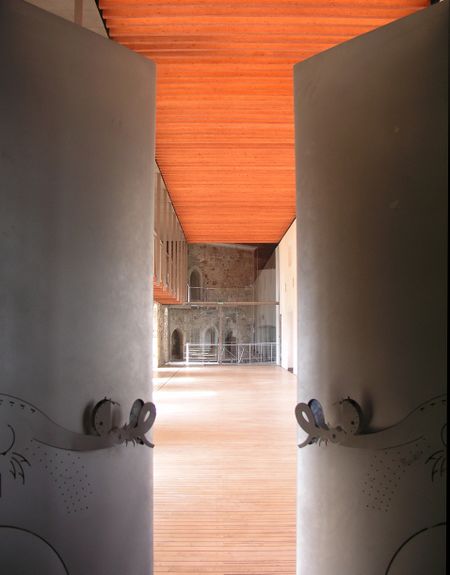

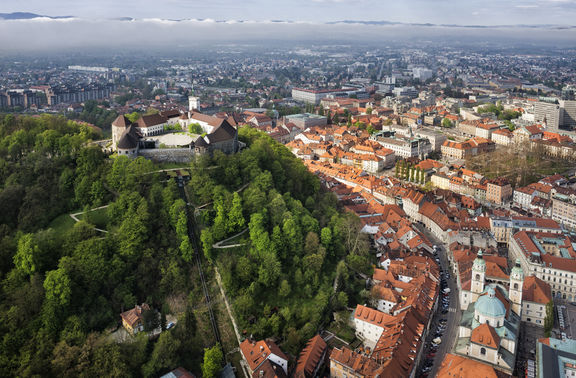

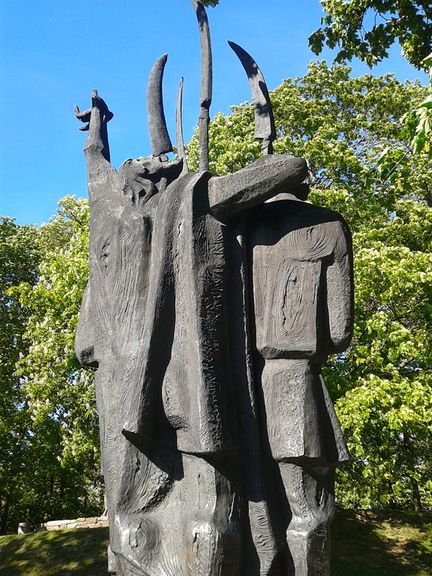

![Ljubljana Castle and Slovene Philharmonic, shot from the recently renewed Congress Square [Kongresni trg], 2012](/images/thumb/2/25/Ljubljana_Castle_2012_distant_view.jpg/576px-Ljubljana_Castle_2012_distant_view.jpg)
